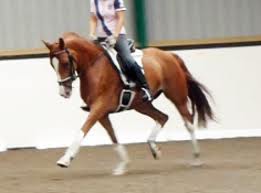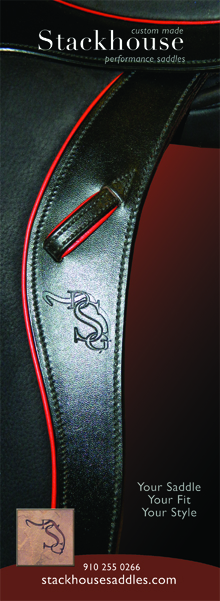Search the Site
Leg Movers VS Back Movers (Current Freebie!)

Some horses naturally use their entire bodies when they move, even with a rider on board. These natural back movers tend to be relaxed and swinging through their backs all of the time. When watching them work, you can actually SEE the throughness and the elasticity of their movements. Then there are some horses that don't have a lot of natural movement through their bodies when they move - even without a rider on board. These horses are natural leg movers.
The majority of horses fall somewhere in between. They can move through their bodies, but may have a tendency to tighten their backs and become leg movers when ridden. Let's talk about how to tell if your horse is correctly moving through his back, how to improve your horse's back movement, and why it is so important!
When you first get on your horse and walk on a loose rein, notice how much back movement you feel underneath you. Drop your stirrups to deepen your seat, and really feel the movement of the walk bring your left seatbone forward....and then your right. If your horse is not moving you very much, and you feel like you are just sitting up there pretty still, your horse is likely not moving a whole lot through his back. If that's the case, spend a few minutes riding him forward up into the connection, to activate his hind legs and get him really on the aids. Now evaluate again......do you feel more movement? A bigger thrust from the hind leg that goes more through his back? Strive to be more aware of looking for that feeling when you ride.
In the gaits with impulsion (the trot and canter), not only should you feel the movement of the back muscles swinging underneath your seat, but you should feel that resultant power in your hands through the contact. When the horse moves correctly through it's body, the rider can literally feel the horse's hind legs in their hands. The back mover actively seeks the connection.
If your horse is heavy in your hands, he is likely braced in his back. If you feel nothing in your hands, and your horse's gaits are very smooth to sit, he is likely holding his back still, and just moving along with his legs.
When you are watching a horse being ridden, look for a sense that the movement is permeating the horse's entire body. Remember that the way the horse is carrying its tail is a great indicator of the state of the horse's back. Look for it to be carried softly away from the horse's body, and swinging with the movement of the gait.
A "leg mover" can either be a short, choppy mover - or it can be quite extravagant with it's legs. It is unfortunately getting to be quite a common sight in the world of upper level dressage nowadays - the toe flipping, extravagant leg mover with a tight back from being cranked into an overly short frame with very strong reins.
Why is it so undesirable for a horse to be a "leg mover"? The continuing tension in the musculature, and the resultant increased concussion in the joints of the legs is likely to eventually lead to premature breakdown. When the movement goes through and permeates the horse's entire body, concussion is dissipated more throughout the body, and not concentrated as much on the joints of his legs. And true collection and extension will not be possible if the horse is not moving correctly through it's back.
To ensure that you are training for full body throughness, focus constantly on the state of your horse's back. Always asking yourself if the back is relaxed and swinging, with active hind legs - and if the horse is seeking the contact.
Since seeking the connection is a good sign that your horse is using his back correctly, test him throughout your rides by asking him to stretch. After a shoulder in, a trot lengthening, a canter pirouette, or downward transition, allow your horse to stretch forwards and down. If he does so, smoothly and promptly, while maintaining balance and rhythm, then the connection over his back was likely true.
Transitions forward and back within the gaits are a great way to increase the throughness of your horse's movement. Every time you send your horse forward, say into a few steps of medium canter - you can put more movement through his topline. And when you bring him back into the collected canter, you are increasing the engagement, or carrying power, of the hind legs. Then test your horse and improve suppleness by asking for a few strides of stretching over the back.
To be always training for more throughness and back suppleness, constantly strive for the feeling that your horse's back is lifted up underneath you (like an arched bridge), and that his movement is permeating his entire body, and allowing you to feel his hind legs in your hands.






